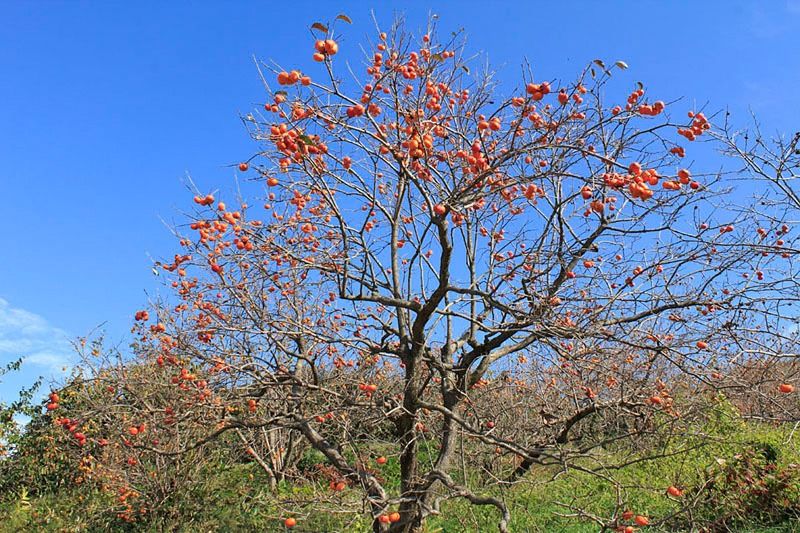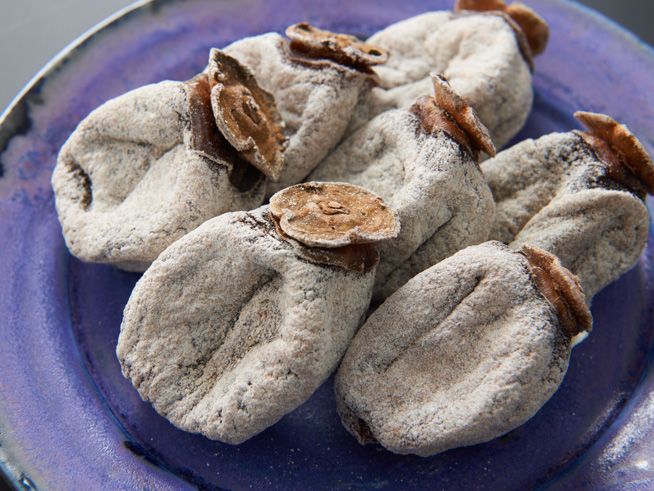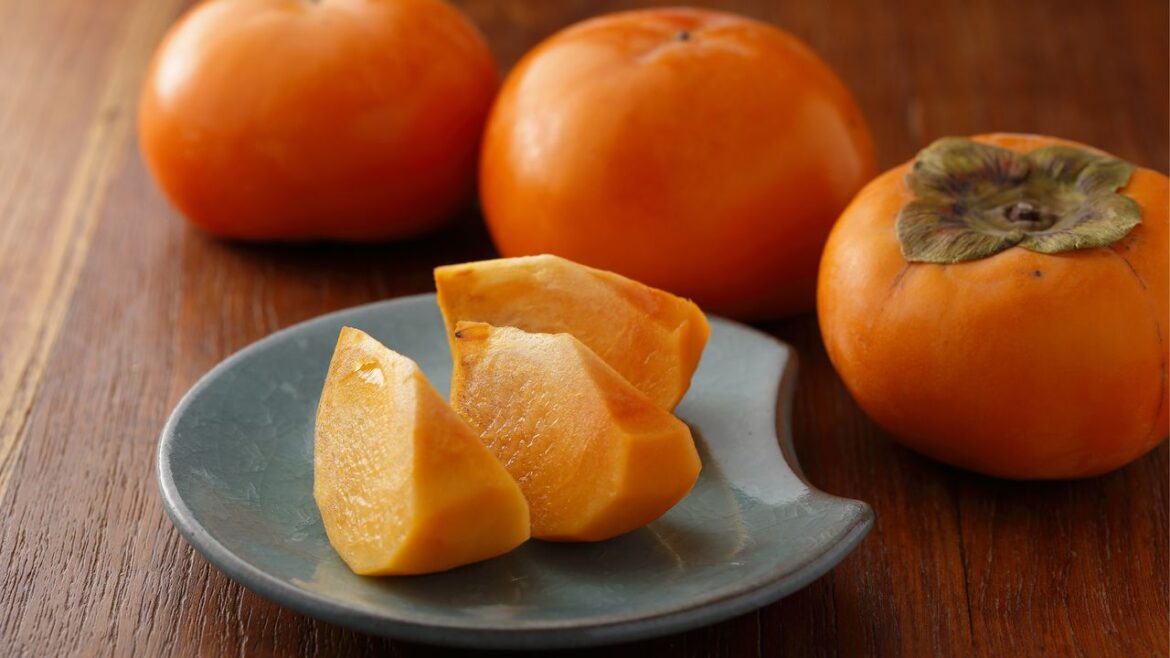Persimmons come into season toward the end of the year; their Japanese name, kaki, is a seasonal word for late autumn in the haiku poetry tradition. Whether eaten fresh or dried as hoshigaki, these sweet treats have been on the menu in Japan for well over a thousand years.
In High Demand Overseas
Native to East Asia, persimmons, known in Japan as kaki, are in season in October to November in an ordinary year. While the seeds of this fruit have been found in excavations at Jōmon period (ca. 10,000–300 BCE) archaeological sites, it is thought that varieties closer to modern-day persimmons were introduced from China during the Nara period (710–94). The persimmons of that time were astringent, a type known as shibugaki, which even when ripe taste very sharp and bitter.

Persimmon trees in Date, Fukushima. (© Fukushima Prefecture Tourism and Local Products Association)
It was during the Kamakura period (1185–1333) that amagaki emerged, a type of sweet persimmon that lost their astringency as they ripened on the tree and so could be eaten raw. In the Edo period (1603–1868), persimmon varieties from various regions began to be branded and exported from Japan to Europe and later to the United States. The Japanese word kaki is used directly in the scientific name Diospyros kaki. It is a generally recognizable word in Europe and America. Japanese kaki are held in high regard overseas and export volumes are rising.
Fuyū and Jirō are popular among the sweet varieties, while the seedless Hiratanenashi is a favorite astringent persimmon. All of these are produced in large quantities. As shibugaki cannot be eaten raw, the bitterness is removed using carbon dioxide or alcohol. The persimmons sold at supermarkets have been shipped after having the astringency removed, so you don’t need to worry about which one to choose, as they will all be sweet.
Some grow wild in satoyama rural woodland spaces, while others are often planted in private yards and gardens. The reddish-oranges fruit that can be seen hanging from the tips of leafless branches in late autumn are a nostalgic sight calling to mind the end of autumn and the coming winter for many Japanese.
The Ancestral Wisdom of Hoshigaki
Back when only shibugaki existed, people at that time discovered the astringency could be removed by drying them. This was the beginning of hoshigaki—dried persimmon—production. By the Heian period (794–1185), they were being used as ceremonial sweets at festivals and regarded as a valuable preserved food. Incidentally, the white powder on the surface of the fruit, referred to as shisō (“persimmon frost”), is crystallized sugar. The sixteenth-century tea master Sen no Rikyū is said to have served them as a sweet during tea ceremonies. The knowledge that the sweetness of dried persimmons is second to none has been passed down among wagashi artisans, and to this day they serve as a gauge for sugar content in wagashi, as hoshigaki were basically the first Japanese confectionery.

Benigaki hoshigaki, a variety of dried persimmon from Kaminoyama, Yamagata. (Courtesy of the Ministry of Agriculture, Forestry, and Fisheries website)
Kaki are said to have such high nutrition that “when the persimmons turn red, the doctors turn pale,” and the leaves, rich in vitamin C, are used to make caffeine-free tea. The wood is also used in construction, with the exceptionally rare kurogaki black persimmon wood used to make high-end furniture and tea ceremony utensils. Meanwhile, kakishibu, the fermented juice of astringent persimmons, is used in dyes and paints. It is clear that kaki are deeply rooted in Japanese life.
(Originally published in Japanese. Text by Ecraft. Banner Photo: Fuyū persimmons. Photo courtesy of Gifu Prefecture Tourism Federation.)


AloJapan.com